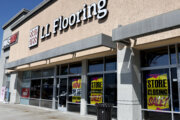It’s hard to overstate just how much emphasis retailers place on the holiday shopping season. When accounting for all stores, the month or so after Thanksgiving Day accounts for about one-fifth of sales, on average.
But that number can jump dramatically, depending on the retailer. A jewelry store, for example, may see nearly 30 percent come through during December.
This year is no different. And while sales aren’t supposed to crater, they’re not exactly going to wow either. The National Retail Federation predicts that holiday retail sales will increase 3.6 percent to $655.8 billion. It’s above the average 2.5 percent, but it’s a level that makes analysts shrug. It signals a “very stable economy,” says Paula Rosenblum, managing partner at Retail Systems Research.
[See: 7 Things That Happened When Donald Trump Met With Tech Leaders.]
And part of what comes with a stable, safe jump in sales is a decent economy without a ton of blockbusters available. But it’s also a unique year, with the election fallout continuing to penetrate planning and boosting markets.
It’s difficult to quantify the election’s impact. Prior to the election, a number of retailers blamed the bully pulpit for dragging sales. In September, Gap (ticker: GPS) CEO Art Peck said that the election is “probably unsettling consumers right now,” while Barnes & Noble’s ( BKS) Leonard Riggio said the “unprecedented” negativity between the candidates led to fewer shoppers.
But now that the uncertainty is over, and President-elect Donald Trump is headed to the White House, have retailers been saved? It depends on how the individual shoppers felt about the election. If one voted for Trump, then he’s likely feeling very comfortable right now. If she voted for Hillary Clinton, then the pessimism could keep the shopper away.
And initially, more people were staying away. On Nov. 23, Adobe Digital Insights found that online sales had lagged by nearly $800 million from its estimates, due to the election. But by this week, online sales had grown 8 percent compared to last year, recovering from the post-election doldrums.
It speaks to what really impacts the holiday sales: consumer sentiment. And that can be fickle. With the market up 6 percent since Election Day, it “favors the upper-income consumers,” says Morningstar analyst R.J. Hottovy. With consumers feeling flushed with cash that could bode well for retailers that service higher-end clientele, like Williams-Sonoma ( WSM) or Nordstrom ( JWN).
That doesn’t mean the lower-end consumer doesn’t have reasons to shop. The unemployment rate is at 4.6 percent and with the national average gas price at $2.21 per gallon, there’s belief that spending could remain high.
But with no clear indication where the economy will move next, it’s no wonder the sales will remain somewhat subdued. And the real impact of the election on holiday sales could come next year, if Trump’s policies — whether it’s from a tax perspective or anti-trade efforts — take hold.
Samsung’s Galaxy Note 7 recall hurts technology sellers. Retailers are at the whim of what manufacturers provide them. A lack of buzz-worthy products can damage the year. And when Samsung’s Galaxy Note 7 began combusting without cause, it sent shockwaves throughout the mobile retail space.
Best Buy Co. ( BBY) estimated that it would lose $200 million in sales this year, due to the recalled phone. But the bigger problem for Best Buy and other technology retailers is the fact “there’s not a major tech item” for sale, says Jerry Sheldon, an analyst at IHL Group, a retail research and advisory firm.
[See: 7 of the Worst Product Flops Ever, Besides the Samsung Galaxy Note 7.]
“When you have a major tech item that is released, it drives people to the malls,” he says.
That’s particularly true in the mobile technology space, since Galaxy Note 7’s flameout coincided with the muted excitement around the Apple ( AAPL) iPhone 7. But some technology products have caught shoppers’ eyes, particularly Alphabet’s ( GOOG, GOOGL) Google Home or the Amazon.com ( AMZN) Echo. The only problem: These products can be bought directly from the manufacturer.
That leaves Best Buy pushing larger purchases, such as televisions, this year, Hottovy says.
E-commerce remains the hottest trend. Overall e-commerce sales still pale in comparison to total output from retail. This year, e-commerce sales are expected to jump 17 percent to $94.71 billion, according to eMarketer. If that happens, it will be the first time that e-commerce reaches 10 percent of overall holiday sales.
Besides Amazon, though, it’s difficult to pick out winners. E-commerce efforts at Neiman Marcus account for about a quarter of revenues. But this week it released comparable sales results showing an 8 percent decline overall. Internet shopping, according to CEO Karen Katz, has allowed its customers to compare prices, leading to less frequent visits from its core shoppers.
Or there’s Macy’s ( M), which gains less than a tenth of sales from online, yet it hasn’t kept its prospects from dimming. It has seen eight consecutive drops in quarterly comparable sales. And the fact its website crashed for several hours on Black Friday won’t help the effort.
On the positive end, the increased number of shoppers online has reduced the foot traffic in stores, making for a better shopping experience, Rosenblum says.
[Read: Why Shopping Malls Are Losing Major Retailers.]
One way retailers are attacking online growth is to improve the customer experience at the store. Decreasing foot traffic, though, isn’t likely what they had in mind.
More from U.S. News
7 of the Best Health Care Stocks to Buy for 2017
7 of the Best Stocks to Buy for 2017
The 7 Best Bank Stocks to Buy for 2017
3 Things Impacting Retail Stocks Into 2017 originally appeared on usnews.com







